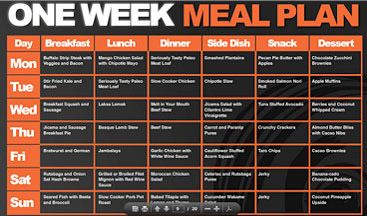
MMA Grappling Techniques: A Comprehensive Guide
Mixed martial arts (MMA) is a full-contact combat sport that allows a wide range of striking and grappling techniques. While striking plays a crucial role, grappling forms the bedrock of many successful MMA fighters. A strong grappling game provides a path to victory through takedowns, submissions, and control, allowing fighters to dominate their opponents on the ground. This article delves into the key grappling techniques utilized in MMA, exploring their applications and intricacies.
The Foundation: Takedowns
The initial step in many successful grappling exchanges is the takedown. Successfully bringing the fight to the ground gives the grappler a significant advantage, neutralizing the opponent’s striking and setting up subsequent grappling techniques. There are numerous takedowns employed in MMA, categorized broadly into single-leg takedowns, double-leg takedowns, and throws.
-
Single-leg takedowns: These involve securing one of the opponent’s legs and driving them to the ground. Variations include the high-crotch single-leg, the low single-leg, and the ankle pick. Each requires different grips and techniques to execute effectively, demanding timing, speed, and leverage. The high-crotch involves a strong grip around the thigh, while the low single focuses on attacking the ankle or lower leg. The ankle pick is a more dynamic and quick option. Mastering these variations allows fighters to adapt their takedown game to different opponents and situations.
-
Double-leg takedowns: These are powerful takedowns that involve securing both of the opponent’s legs, lifting, and driving them to the ground. This is a forceful takedown, demanding strength and explosive power. Successful execution often requires strong penetration steps and a firm grip on the opponent’s legs. Variations include the shot takedown, the double-underhook takedown, and the blast double. The shot double involves a quick, explosive approach, while the double-underhook utilizes underhooks for added control. The blast double is a powerful, high-percentage takedown, but requires significant explosiveness and timing.
-
Throws: These are techniques that utilize the opponent’s weight and momentum to execute a takedown. They often involve lifting and throwing the opponent, using techniques like hip throws, suplexes, and Judo throws. Throws require balance, timing, and technique, as well as a good understanding of leverage and momentum. While powerful, they can be more risky than other takedowns, leaving the fighter vulnerable if the throw is unsuccessful. This requires precise timing and a strong understanding of the opponent’s reactions.
Ground Control and Positional Dominance:
Once the takedown is successful, maintaining control becomes crucial. This involves securing dominant positions like side control, mount, and back mount. These positions offer various advantages:
-
Side Control: This involves lying on the opponent’s side, controlling their movement and delivering strikes or setting up submissions. Maintaining side control requires strong control of the opponent’s hips and preventing them from bridging or escaping. Effective strategies involve controlling the opponent’s posture and preventing them from turning towards you.
-
Mount: This dominant position involves sitting on the opponent’s chest and abdomen, greatly restricting their movement and providing opportunities for ground and pound strikes and submissions. Maintaining mount requires strong control and the ability to prevent the opponent from escaping or reversing position. This demands strong core strength and the ability to maintain a high level of pressure.
-
Back Mount: This is perhaps the most dominant position in grappling, allowing for numerous submissions such as rear-naked chokes, triangle chokes, and various arm locks. Securing back mount requires skillful back-taking techniques, strong grips, and maintaining a secure hook. Maintaining back mount requires consistent control and the ability to prevent the opponent from escaping or defending submissions.
Submissions:
Submissions are techniques that force an opponent to tap out due to pain or the threat of joint injury. There are numerous submissions in MMA, targeting various joints and limbs:
-
Chokes: These techniques restrict blood flow to the brain, causing the opponent to lose consciousness. Common chokes include rear-naked chokes, guillotines, and triangle chokes. Each choke requires specific grips, pressure points, and techniques to execute effectively.
-
Joint Locks: These involve hyper-extending or hyperextending joints, causing pain and potential injury. Common joint locks include armbars, kimuras, heel hooks, and knee bars. Precise technique and strong grips are essential for successful execution, requiring a deep understanding of joint mechanics.
-
Strangles: These are choking techniques that cut off blood flow to the brain. The most common types are rear-naked chokes (RNCs) and guillotines. The RNC is particularly effective from the back mount, while the guillotine can be applied from various positions.
Sweeps and Escapes:
Sweeps are techniques used to reverse the dominant position of an opponent, while escapes allow a grappler to get out of a compromised position. These techniques are equally crucial to both offensive and defensive grappling. Effective sweeps and escapes require timing, technique, and understanding of the opponent’s posture and weight distribution. Examples include the hip bump sweep, scissor sweep, and the technical stand up. Escaping dominant positions like mount and side control involves understanding the opponent’s pressure points and strategically using leverage to create space and break free.
Conclusion:
MMA grappling is a multifaceted and dynamic aspect of the sport. Mastering takedowns, maintaining control, securing dominant positions, and executing submissions and sweeps is essential for success. The techniques discussed here represent only a fraction of the diverse grappling arsenal used in MMA. Continuous training, refinement of technique, and a deep understanding of both offensive and defensive grappling are key to becoming a well-rounded and successful MMA grappler. The constant evolution of techniques and the adaptability required to counter different styles make MMA grappling a challenging and rewarding pursuit.



